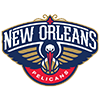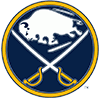After further testing, Casas' rib injury has been changed from a rib strain to tear of the cartilage in the area. This cartilage, known as costal cartilage, is different than bone and allows the rib cage to expand when breathing.
The rib cage is made up of 24 ribs (12 paired bones on each side), the sternum (breastbone), 12 corresponding vertebrae of the spine and the costal cartilage. The costal cartilage of the first seven pairs attaches directly to the breastbone. The next three pairs (ribs 8 through 10) anchor to the costal cartilage of the ribs directly above them. The final two rib pairs, 11 and 12, do not attach to the sternum but remain connected to the spine.
Most costal cartilage injuries occur to the upper ribs, generally closer to the chest. Costal cartilage injuries are more common in contact sports like football or hockey, though they occasionally will occur in baseball. Last season, Marcus Stroman suffered a costal cartilage tear, while Oakland outfielder Brent Rooker missed 10 days earlier this season with a low-grade costal cartilage injury.
Casas' injury is more significant than Rooker's, evidenced by his shift to the 60-day IL. The move makes sense when you consider the slow healing rate of cartilage and the stress placed on and through the area with baseball-related activities. The recently acquired Garrett Cooper is expected to take over the everyday first base role for the Red Sox and could be worth a speculative add.
After further testing, Casas' rib injury has been changed from a rib strain to tear of the cartilage in the area. This cartilage, known as costal cartilage, is different than bone and allows the rib cage to expand when breathing.
The rib cage is made up of 24 ribs (12 paired bones on each side), the sternum (breastbone), 12 corresponding vertebrae of the spine and the costal cartilage. The costal cartilage of the first seven pairs attaches directly to the breastbone. The next three pairs (ribs 8 through 10) anchor to the costal cartilage of the ribs directly above them. The final two rib pairs, 11 and 12, do not attach to the sternum but remain connected to the spine.
Most costal cartilage injuries occur to the upper ribs, generally closer to the chest. Costal cartilage injuries are more common in contact sports like football or hockey, though they occasionally will occur in baseball. Last season, Marcus Stroman suffered a costal cartilage tear, while Oakland outfielder Brent Rooker missed 10 days earlier this season with a low-grade costal cartilage injury.
Casas' injury is more significant than Rooker's, evidenced by his shift to the 60-day IL. The move makes sense when you consider the slow healing rate of cartilage and the stress placed on and through the area with baseball-related activities. The recently acquired Garrett Cooper is expected to take over the everyday first base role for the Red Sox and could be worth a speculative add.
Like Casas, Bellinger is on the IL for a rib injury. However, his injury is classified as a rib fracture, meaning the involved tissue is bone, not cartilage. As a result, Bellinger is more likely to return first. Unlike cartilage, bone heals relatively quickly and can return to its original strength. Bellinger has already begun doing some light hitting and running, and believes he will not be shelved long. He also has a distinct advantage of having dealt with a similar injury in 2021. He missed the minimal amount of time then and believes this situation is comparable. The Cubs will be patient here and allow top prospect Pete Crow-Armstrong to remain in centerfield. Crow-Armstrong has looked sharp since joining the Cubs, batting .385 with one home run and four RBI in five outings.
Bradford is yet another player dealing with a rib injury. Originally diagnosed as a back strain, further testing uncovered a stress fracture in one of Bradford's ribs. It is not uncommon for rib fractures, particularly stress fractures, to be missed on the initial X-ray. The ribs are thin bones, and a fracture may not be detectable until healing has begun. The new classification means Bradford will miss more time than initially expected, extending his recovery for at least another month. Allowing the fracture to heal and pinpointing any underlying issues contributing to the break will be key to ensuring Bradford's long-term health. The setback is a blow for a Texas rotation still waiting on the return of veterans Max Scherzer and Jacob deGrom.
Check Swings
Kyle Bradish: This is your last chance to check if Bradish somehow remains on your waiver wire. The Baltimore right-hander is set to return to the Orioles rotation this week after completing his third rehab start. Bradish is recovering from a partially torn ulnar collateral ligament (UCL) in his throwing elbow that has prevented him from building on last year's success. He struck out 14 over his 11.1 innings pitched during his rehab stint and could be a nice addition to any fantasy roster in need of pitching help. However, he remains a high-risk investment given the unpredictability of his elbow.
Zac Gallen: Gallen is hopeful he will be able to make his next scheduled start after leaving his most recent start with spasms in his right hamstring. Hopefully the injury is not anything more than a spasm, as hamstring strains tend to be fickle injuries that are easily aggravated or reinjured. He's scheduled to pitch Wednesday against the Dodgers, and those invested here may want to scale back their expectations until he proves the injury is a non-issue.
Tyler Glasnow: The Dodgers right-hander also left his most recent outing with cramps, though his involved the muscles off both his calf and his hand. Cramps occur for a variety of reasons with most incidents linked to fatigue or overuse. Fluid loss and electrolyte levels can also be contributing factors. Identifying the underlying cause is crucial in treating and preventing a recurrence. Glasgow cited the humidity and his overall sweating as likely culprits to his issues. While Glasnow should be fine moving forward, it is important to remember that cramps can lead to actual muscle strains if the spasm is violent enough, and the odds of cramps occurring are only going to go up as summer approaches. Utilize him as you would normally but keep an eye out for any signs of lingering complications.
Merrill Kelly: After I detailed Kelly's injury last week, the Diamondbacks provided a more definitive timeline as to how long they expect Kelly to be sidelined. Manager Torey Lovullo stated they believe Kelly's strained teres major will keep him out for at least a month. The team did not clarify the exact severity of the strain, but the estimated recovery window suggests this is a more moderate strain. An early June return appears to be a best-case scenario.
Blake Snell: The Giants pitcher is expected to miss an extended period of time after suffering a Grade 2 adductor strain. The adductors, more commonly known as the groin, are a group of muscles that collectively help with core stability and pulling the leg inward toward the midline of the body. In pitching, the groin helps generate and transfer force when delivering a pitch and is an underappreciated part of a pitcher's mechanics. A Grade 2 classification means the involved muscle is partially torn, and it wouldn't be surprising to see Snell miss multiple weeks recovering.
Justin Steele: The Cubs ace will begin a rehab assignment for the hamstring strain he suffered on Opening Day. He will pitch for Triple-A Iowa on Wednesday, though it remains unclear how many starts he will long on this rehab assignment. Barring a setback, a mid-May return seems plausible.





































